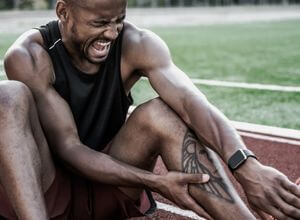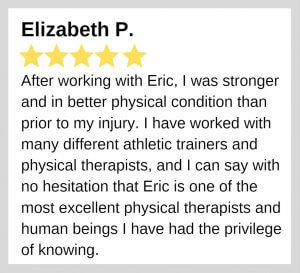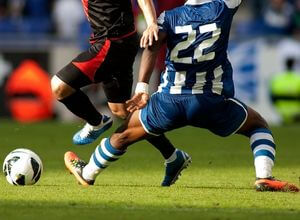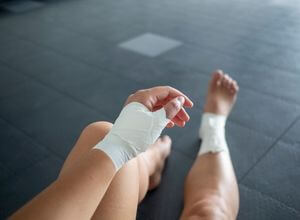Major sports injuries can happen to anyone, from amateur athletes to professional athletes. Fortunately, you may take precautions to reduce the likelihood of one happening. If you do have an injury, getting the right care is crucial to getting back to how you were before. Major sports injuries are common and can happen to any region of the body. Among the common sports-related injuries are:
1. Epicondylitis (Golf & Tennis Elbow)
Epicondylitis is an inflammation of the elbow’s tendon. If your wrist is bent and repeatedly stretched, the tendons’ tissues may become ripped. Medial epicondylitis manifests on the inside of the elbow, whereas lateral epicondylitis affects the outside. Medial and lateral epicondylitis are most commonly referred to as tennis elbow and golfer’s elbow, respectively.
Avoiding strenuous activity can help both types of epicondylitis go away and allow the tendon to heal. Exercise or physical therapy techniques may be helpful if rest is insufficient.
2. Stress Fracture
A bone fracture is a break in a bone. It can be caused by a sudden, one-time injury or repeated stress, called a “stress fracture.” The lower extremity’s weight-bearing bones are particularly susceptible to stress fractures. The femur, tibia, fibula, and foot bones are some of them. They are widespread in running or jumping sports like gymnastics, tennis, basketball, or track and field, where there is repetitive impact. Running places stresses on the lower limbs that are two to three times that person’s weight.

3. Dislocation
A joint becomes “dislocated” when the two bones that make it separate due to impact or stress. Most dislocations happen in contact sports like basketball and football, as well as high-impact sports that involve a lot of stretching or falling. Most of the time, a dislocated joint must be treated right away, but sometimes the bones move back into place on their own. A dislocation is a painful injury that usually happens in the shoulders, elbows, fingers, kneecap, and femur-tibia or knee.
4. Patellofemoral Syndrome (Knee)
Your kneecap rubs up against the end of your thighbone with the help of several tissues. Running or jumping exercises can harm these tissues, which may lead to the patellofemoral syndrome. Physical therapy to strengthen the quadriceps and orthotic shoe inserts that relieve pressure on your knee joint can also be beneficial. Patellofemoral syndrome might take up to six weeks to recover from.
5. Ankle Sprain
The ankle’s external ligaments are not very strong. They may stretch or tear due to the ankle being twisted, which results in a sprain. To rule out a fracture after an ankle sprain, you should see a doctor as soon as possible. Because the appropriate exercises can assist in regaining flexibility and strength, physical therapy is frequently essential to recovery from an ankle sprain.
6. Anterior Cruciate Ligament Tear (Knee)
The ACL angles diagonally across the knee to keep the bones of your knee joint together. In sports where there is a lot of cutting, ACL tears are frequent. The typical treatment for an ACL injury is surgery, followed by physical therapy for recovery.
7. Concussion
Athletes in both contact and non-contact sports often get concussions, which are considered diffuse brain injuries that cause sudden changes in mental status. Shaking the brain inside the skull can cause a concussion, and if it’s bad enough, it can tear nerve fibers and neurons.
8. Shoulder Injuries
The shoulder has the largest range of motion of any joint in the body, but it is also the most unstable and, therefore, more prone to injury. One of the most frequent sports injuries is a tear of the rotator cuff, a group of four tendons that stabilizes the shoulder joint. Sprains, strains, and dislocations are other common shoulder injuries.
9. Sciatica (Back)

The sciatic nerve runs the whole length of each leg from the low back. When there’s a sciatic nerve compression due to a spine injury, such as a bulging disk, it can cause pain, numbness, and tingling down the leg. Sciatica, often known as these symptoms, is frequently brought on by sports that require a lot of upper body rotation or a flexed forward posture.
10. Achilles Tendonitis (Ankle)
Found at the back of the ankle, the Achilles tendon connects the heel bone and the calf muscle. A tear can result from overuse of the calf muscles. Treatment for an Achilles tendon tear typically involves anti-inflammatories, rest, ice, elevation, and compression.
Diagnosing Major Sports Injuries
Before a Physical Examination
Generally, most acute and chronic sports injuries can be diagnosed by orthopedists, sports physicians, physical therapists, and athletic trainers. Prior to undergoing a physical examination, you will need to provide your medical history, details on how the injury happened, and the symptoms you’re experiencing.
During the Physical Examination
At this stage, your healthcare professional will ask you about the degree of pain or tenderness while palpating the injured area. You may also be asked to move the area to test the range of motion. During a physical examination, take the time to inform your doctor in detail about the ongoing pain and symptoms you are facing or any concerns you may have for an accurate diagnosis.
Based on the suspected injury from the information shared during the physical exam, medication may then be prescribed to help heal the injury internally. Various tests may also be conducted to rule out any severities, such as broken bones. For injuries including tissue damage, additional diagnostic imaging tests may be carried out as well, such as:
Computed Tomography (CT) Scan — This test gives doctors a closer look into broken bones and soft tissue and can reveal deformities in complex joints.
Magnetic Resonance Imaging (MRI) — This technique is used for diagnostic imaging of sprains, fractures, muscle injuries, joint damage, and head injuries sustained during sports and other physical activities. Furthermore, musculoskeletal structures like muscles, tendons, bones, and ligaments can also be examined through this method.
Ultrasound — Ultrasounds take real-time images of soft tissues and can identify tendon damage.
What Do Major Sports Injury Treatments Involve?
Your sports injury treatment will be based on the extent and type of your injury. You should see the doctor if your pain persists or if it is severe. What you might think is a straightforward sprain may actually be a fractured bone.
Physio aims to rehabilitate the site of your injury, often using specific exercises to promote strength and flexibility. It is frequently used for sprains of muscles, ligaments, and joints and may be recommended after a sports injury operation to help your rehabilitation.
If you have major sports injuries, you may require a surgical procedure. Surgery for sports injuries is often performed to realign misplaced bones, fix broken or fractured bones, or repair torn ligaments.
Major Sports Injuries: Aftercare and Recovery
Your doctor or physiotherapist will advise you on your aftercare and recovery based on your individual sports injury.

Some sports injuries will recover within a few weeks; others take months to make a full recovery.
Your recovery from major sports injuries should be gradual. Initially, you will focus on moving the injured part using gentle exercises to increase your range of motion and stretch and strengthen it. You can steadily increase your level of activity. This will assist your injured body part in regaining normal function again.
You should avoid pain and not return to your previous exercise or sport until you have regained your full range of motion and strength in the affected area. If you try to play before your injury is fully healed, you could cause further damage and delay your recovery. You can maintain your fitness level through other activities that don’t involve that part of your body.
If you have had surgery after a sports-related injury, you will need to follow specific instructions from your surgeon regarding your aftercare and recovery. Our physiotherapists are available to help you with your recovery and offer specific advice and exercises for your rehabilitation.
Preventing Major Sports Injuries
You can easily reduce your risk of sustaining major sports injuries in just a few simple steps.
Always Warm Up & Stretch Beforehand
The purpose of warming up before engaging in sports and other related activities is to prepare yourself physically for the more strenuous activities that you will be putting your body through afterward. By doing so, it will enhance your blood flow and increase muscle elasticity, ultimately reducing the risk of major sports injuries.
Exercise Regularly

Contrary to popular belief, avoiding exercise entirely can actually increase your risk of sports injuries. Consistent physical activity helps condition your body for sports, making you less prone to major sports injuries.
Don’t Push Your Body Beyond Its Limits
If you do hurt yourself, make sure to listen to the body and give it what it needs in order to recover—don’t overdo it! Once you return after recovering, it may be best to ease yourself back into the sports instead of jumping right back into it with the same intensity.
When Should I Seek Medical Attention?
Seeing a doctor for common minor sports injuries that can easily be healed with rest and other home remedies may not be necessary. However, if there are signs of pain and swelling in the injured area that has yet to subside after 24 to 48 hours of the R-I-C-E method, you should call your doctor immediately.
With the help of our professional sports injury doctors, you can receive quality medical care at your doorstep. Our experienced physiotherapists can customize a personalized plan for you, so you can focus on recovery and get back in the game.

